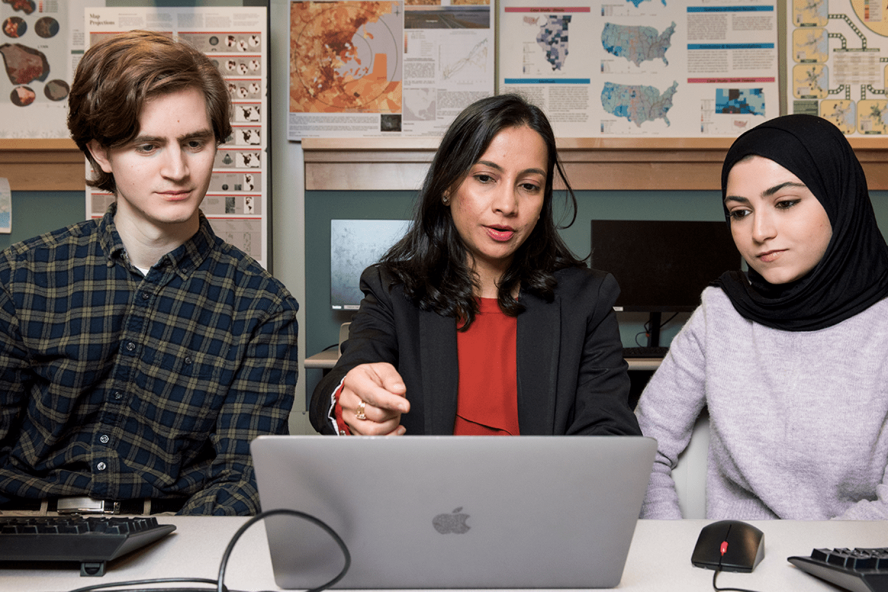A new path for energy storage

Moving towards electric, wind, and solar power generation and transportation is an essential element of adapting to a new energy future. In Assistant Professor Nav Nidhi Rajput’s lab at Tufts, a research team is using novel methods to understand the properties of materials and predict material activity in different circumstances.
Rajput’s research lives at the intersections of chemical engineering, materials science, and computational science. “[Recently] there is more collaboration between departments to solve problems” that may not fall under a traditional discipline umbrella, she says. In the Rajput Lab, “we are focusing on problems relating to new materials, designing new materials, and predicting new materials.”
Her team uses computational modeling to understand and predict the properties of materials that could be used in processes relating to energy storage and production. “We are trying to understand very fundamental physical and chemical properties of materials, in particular electrolytes and electrodes, for energy storage devices using computer simulations,” Rajput says.
Focusing specifically on fluids and solid/fluid interfaces, the team also designs models for assessing the effectiveness of different materials for applications in energy production and consumption.
One example is the development of multivalent batteries, including magnesium ion and aluminum ion batteries. “We have restrictions on the materials” found in widely-used lithium ion batteries, Rajput says, so new solutions are needed to build batteries with better energy density.
For Rajput and her team, collaborating with other researchers is critical to their work. The group is joining forces with the Pacific North West Lab to design molecules for better stability and solubility and with researchers at the Electrolyte Genome Project to develop a code base for the rapid understanding and design of electrolytes.
Rajput’s collaborative spirit extends to how the team disseminates their research results. “All the codes that we are developing or that I’ve developed in the past, we’re making all the code open source so the community can use it and contribute to it,” she says. “For a computational person like me, I think one of the things we can contribute to is sharing our codes so people don’t have to pay. They can use them, and modify them, and contribute more to the framework. I think that’s a very healthy approach going forward.”
Department:
Chemical and Biological Engineering